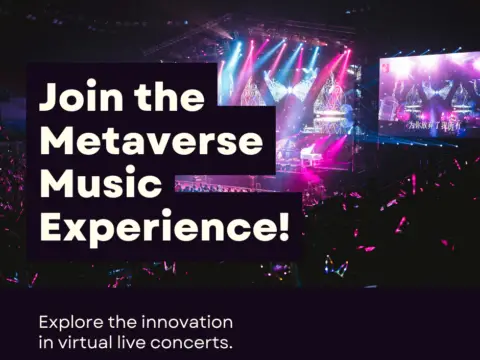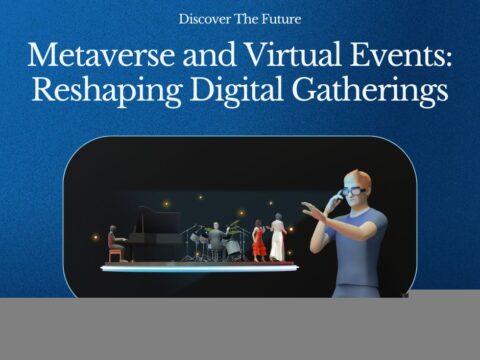The Metaverse, a virtual universe where users can interact with computer-generated environments and other users, is rapidly becoming a transformative space for businesses. This blog post will explore how businesses can leverage the Metaverse to host virtual conferences and events, unlocking new possibilities for engagement, collaboration, and immersive experiences.
Understanding the Metaverse:
- Definition and Concept: Define the Metaverse as a collective virtual shared space, merging augmented reality (AR) and virtual reality (VR) technologies. It offers a dynamic, immersive environment where users can interact with digital representations of themselves and others.
- Metaverse Platforms: Explore popular Metaverse platforms such as Decentraland, VRChat, and Spatial. Each platform has its unique features and capabilities, catering to different preferences and needs.
Leveraging the Metaverse for Virtual Conferences and Events:
- Immersive Experiences: Capitalize on the immersive nature of the Metaverse to create engaging and memorable experiences for conference attendees. From virtual trade show booths to interactive sessions, the possibilities are vast.
- Global Accessibility: The Metaverse transcends geographical boundaries, allowing businesses to reach a global audience without the limitations of physical locations. This accessibility can significantly broaden the reach of conferences and events.
- Customizable Environments: Design customizable virtual environments that align with your brand and event theme. Businesses can create branded spaces, from auditoriums for keynotes to networking lounges for casual interactions.
- Interactive Features: Incorporate interactive elements such as 3D models, gamification, and live polls to enhance participant engagement. The Metaverse offers a canvas for creativity, allowing businesses to break away from traditional conference formats.
- Networking Opportunities: Facilitate networking within the Metaverse by creating designated spaces for one-on-one meetings, group discussions, or even spontaneous encounters. Virtual interactions can mimic the spontaneity of in-person events.
- Virtual Merchandising: Integrate virtual merchandising options for sponsors and exhibitors. This could include virtual booths where attendees can explore products or services and make purchases within the Metaverse.
- Content Accessibility and Archiving: Ensure that conference content is easily accessible and archived within the Metaverse. This allows attendees to revisit sessions and materials at their convenience, fostering a more enduring impact.
Technological Considerations:
- VR and AR Integration: Assess the feasibility of integrating virtual reality (VR) and augmented reality (AR) technologies to enhance the immersive experience. This can be particularly valuable for product demonstrations and interactive workshops.
- Cross-Platform Compatibility: Consider the cross-platform compatibility of the chosen Metaverse platform. Ensure that attendees can access the virtual conference using various devices, including desktops, VR headsets, and mobile devices.
- Scalability and Performance: Evaluate the scalability and performance of the Metaverse platform to accommodate a potentially large number of participants. Smooth performance is essential for a seamless virtual event experience.
Future Trends and Evolving Strategies:
- Integration with Web3 Technologies: Stay abreast of developments in Web3 technologies, blockchain integration, and decentralized applications (dApps). These elements may play a significant role in shaping the future of the Metaverse.
- AI-Powered Personalization: Explore the potential of AI-powered personalization within the Metaverse. Tailoring experiences based on user preferences can enhance engagement and satisfaction.
Conclusion:
Embracing the Metaverse for virtual conferences and events opens up a new frontier for businesses to connect with audiences in innovative ways. By combining immersive experiences, global accessibility, and cutting-edge technologies, businesses can harness the full potential of the Metaverse to create impactful and unforgettable virtual events.




